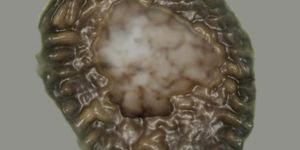How much light is too little or too much in a changing climate?
A simulated evolutionary process in a laboratory has given way to blue-green algae with greater tolerance for high levels of light. The development comes from researchers at Ludwig-Maximilians-Universitaet in Munich who intend to design crop plants capable of adapting to the effects of climate change. The study is published in the journal Nature.
Using a strain of cyanobacteria (blue-green algae) cells that require low levels of light, the researchers conducted a faux evolutionary process to promote the mutation and selection of cells. "To enable them to emerge from the shadows, so to speak, we exposed these cells to successively higher light intensities," says LMU biologist Dario Leister. This was artificial evolution was possible because the cells divide so rapidly that the adaptation process occurred much faster than in real life.
You’re probably asking, “Wait, don’t cells need a lot of sunlight to undergo photosynthesis?” Yes, but, as the biologists explain, too much sunlight reduces photosynthetic efficiency cyanobacteria, algae and plants. But, with our changing climate, plants are already being exposed to higher levels of light, which is why scientists are intent on pushing the natural biological limits.
The research team demonstrated that their blue-green algae were capable of tolerating light intensities significantly higher than the maximal levels experienced on Earth. They also saw that the resulting mutations were associated with changes in the structures of single proteins. As Leister explains, this means that "the mutations involved primarily affect the properties of specific proteins rather than altering the regulatory mechanisms that determine how much of any given protein is produced."
The team speaks about the implication that their work has for crop productivity. "Application of genetic engineering techniques to plant breeding has so far concentrated on quantitative change -- on making more or less of a specific protein," concludes Leister. "Our strategy makes qualitative change possible, allowing us to identify new protein variants with novel functions. Insofar as these variants retain their function in multicellular organisms, it should be possible to introduce them into plants."
Sources: Nature, Science Daily








